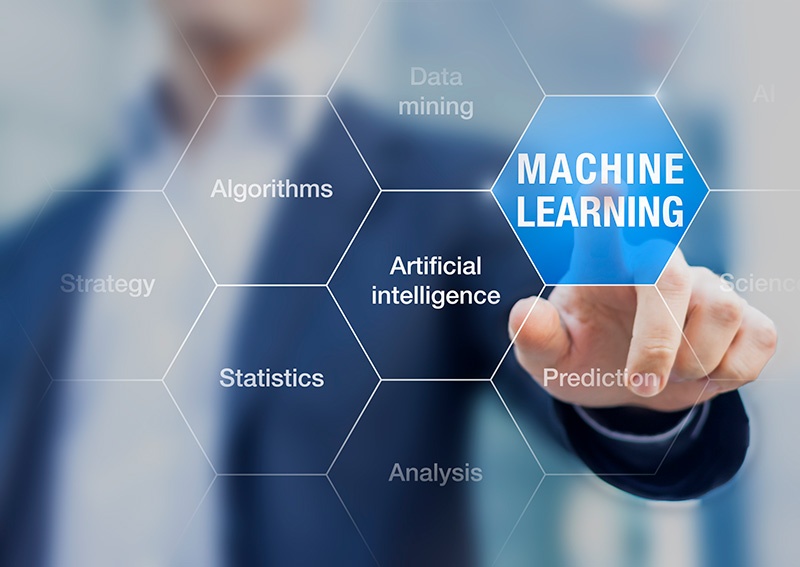AI is Worthless in the Absence of Human Judgment

In almost every industry and sector, AI is opening up new possibilities and forcing us to think outside of long-held paradigms. As these burgeoning resources reshape how we approach business, two related points emerge as vital. First, while the ‘wow’ factor of AI and machine learning is high, it would be dangerous to overestimate the value of cognitive technologies. Second, organizational leaders must be involved in the decisions to invest in and adopt technologies based on how the resources will enhance workforce performance.
One simple imperative lies at the heart of this cautionary argument. Leaders must keep talent in the loop when engaging new technologies if the organization is to make the best use of new information outputs and found time.
Smart Technology is Not Magic
Smart technology is becoming ubiquitous to the point of a commodity. We’ve about reached the point where we can take ‘Tech Startup A, B, or C’ and integrate a machine learning capacity to it and get the ‘smart’ version of the technology. While better, faster, cheaper has its benefits; the widespread application of AI poses the risk of mis- or under-utilization. It’s also creating a cacophony about ‘what’s going to happen to knowledge jobs.’
Indeed, resources like deep learning, cognitive learning, and predictive analytics have elevated our ability to input questions and generate data quickly. They accelerate some steps in the data-to-decisions process and can help to reduce uncertainty and risk. But as we well know, more data isn’t better data, and better data isn’t necessarily going to give us better answers or a clearer understanding of complex issues – particularly if we neglect to engage human judgment.
“As machine intelligence improves, the value of human prediction skills will decrease because machine prediction will provide a cheaper and better substitute for human prediction, just as machines did for arithmetic. However, this does not spell doom for human jobs, as many experts suggest. That’s because the value of human judgment skills will increase. Using the language of economics, judgment is a complement to prediction and therefore when the cost of prediction falls demand for judgment rises. We’ll want more human judgment.” [1]
We’ve been at this human/machine inflection point before. The Industrial Revolution showed that these are not zero-sum situations. Humanity continues to adjust, and it there’s every reason to think it will continue to do so in our current Smart Revolution. This is where organizational leadership steps into a centrally important role.
Leaders Determine the Impact of Augmented Capacity
Historically, technology implementation decisions are the jurisdiction of a department (IT, R&D, etc.) As the influence of machine learning spreads its impact across the organization, however, the choice of what technologies to employ – and how – becomes a higher level decision. Akin to the process of design thinking, in which solutions are created to solve specific user requirements, selecting smart technologies demands that we first consider how they will enhance – not replace – human intelligence, judgment, and talent.
The ideal outcome of integrating smart technologies is seeing the human talent reallocated elsewhere in the value chain or redirected into a new value chain that wouldn’t have otherwise existed. The workforce not only stays in the talent loop, but their capabilities also are allowed to grow through the additional resources and efficiencies the technologies can produce. Because this is a higher-level strategy, it’s the job of those in a position of leadership to identify what could be enhanced and use that understanding to decide how to integrate technology into the talent loop.
Recently, H&R Block announced that it is applying IBM Watson machine learning computing power to tax code. The intent is not to replace its accounting staff. Rather, the technology will help tax professionals deliver better outcomes for customers, and to help those customers to understand how different filing options can impact their tax results. President and CEO Bill Cobb perfectly articulates the argument for augmenting human judgment with technology, “By combining the human expertise, knowledge and judgment of our tax professionals with the cutting-edge cognitive computing power of Watson, we are creating a future where our clients will benefit from an enhanced experience and our tax pros will have the latest technology to help them ensure every deduction and credit is found.”
Of course, progress like what H&R Block is pursuing is not a simple measure of identifying where AI could speed and secure decision-making and add value to the human workforce. The integration process requires a concerted change management approach such as Toffler Associates’ ADOPTSM methodology, which puts a framework to identifying what change means to those impacted directly and indirectly by the new technology.
To create the greatest amount of value for the organization, it’s workforce and its customer base, leadership must convey that despite with machine learning can help us to do, the real ‘smarts’ is not the AI. It is human judgment. By engaging broader, deeper information outputs produced by AI, our human workforce has a new set of incredibly powerful ways to question, reason, and act.
It’s time to see AI as an integrated augmentation of the real value within the organization – the human workforce.
{{cta(‘befa9ff3-80a5-4a6c-b483-9daadb37b099’)}}
[1] The Simple Economics of Machine Intelligence, Ajay Agrawal, Joshua Gans, and Avi Goldfarb, HBR, November 17, 2016
- Categories
- Strategic Planning
- Workforce of the Future


 About the Authors
About the Authors